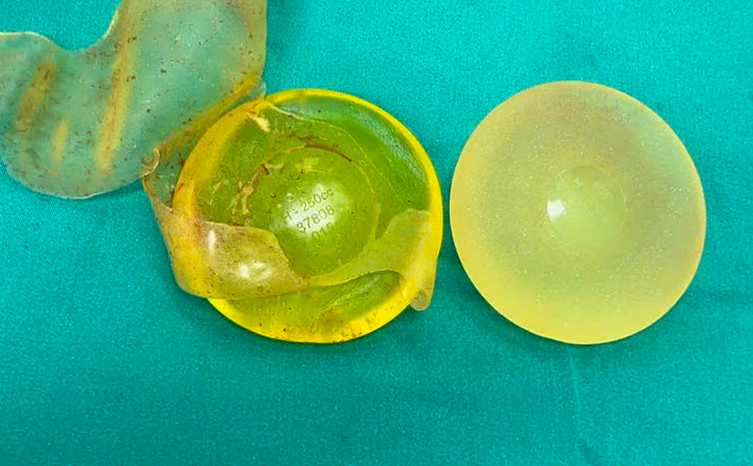An MRI at Tam Anh General Hospital in Hanoi confirmed a 3 mm tear in Thuy's left implant, fluid leakage at the base, and internal degradation within the implant shell.
Dr. Hoang Thi Phuong Lan, from the cosmetic surgery clinic in the department of orthopedic trauma, suctioned the silicone and fluid, removed the implant, dissected the fibrous capsule, and took tissue samples to check for inflammation and silicoma.
 |
The breast implant after surgical removal. Photo: *Tam Anh General Hospital* |
4 days after the surgery, Thuy's drainage tubes were removed, and she was discharged. She was advised to avoid strenuous activity and wear a compression bra 24/7 for the first month to promote tissue stabilization.
According to Dr. Lan, breast implants are durable but not permanent. The average lifespan is 10-15 years, depending on the type and individual factors. After this period, they can degrade, leak, or rupture, releasing silicone into the chest cavity. This can cause immune reactions, swollen lymph nodes, redness, and even lumps around the implant. More severe cases can lead to breast deformity and abscesses. Some patients, like Thuy, show no clear symptoms. If not detected and treated promptly, this can lead to chronic inflammation, breast deformity, or deep tissue infections that are difficult to treat.
Dr. Lan recommends regular checkups, including ultrasounds and MRIs, every one to two years after 10 years of having implants, to detect potential ruptures or capsular contracture. After 15 years, patients should consider replacement or removal, especially if there are signs of degradation, capsular contracture, or unusual fluid buildup. Checkups should not be delayed even if there are no symptoms, as implant ruptures can occur silently over many years.
Thanh Ba












